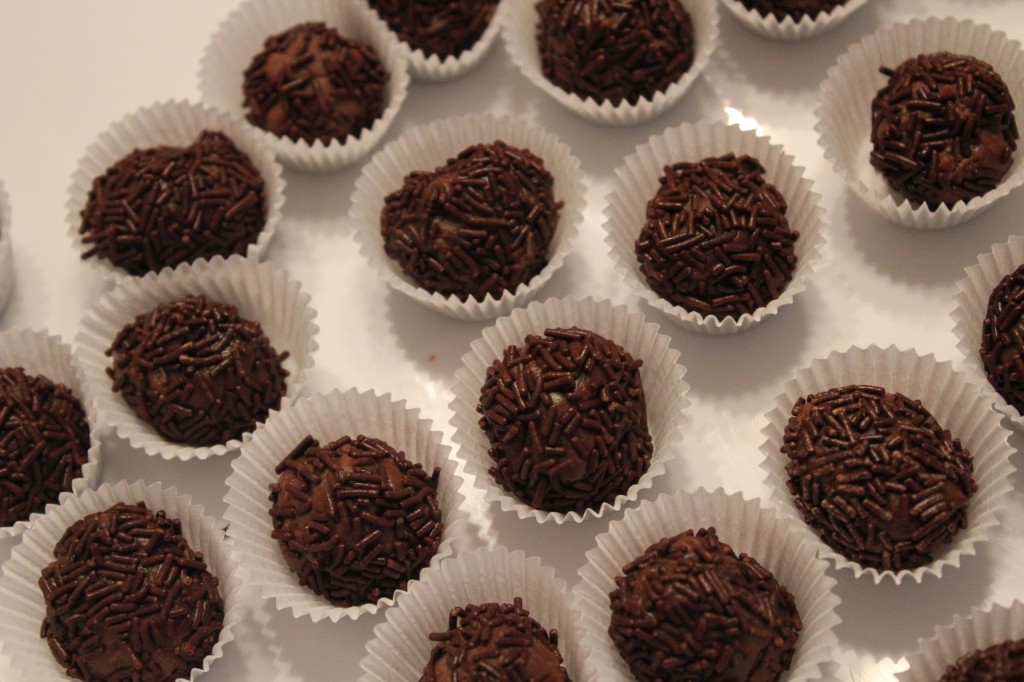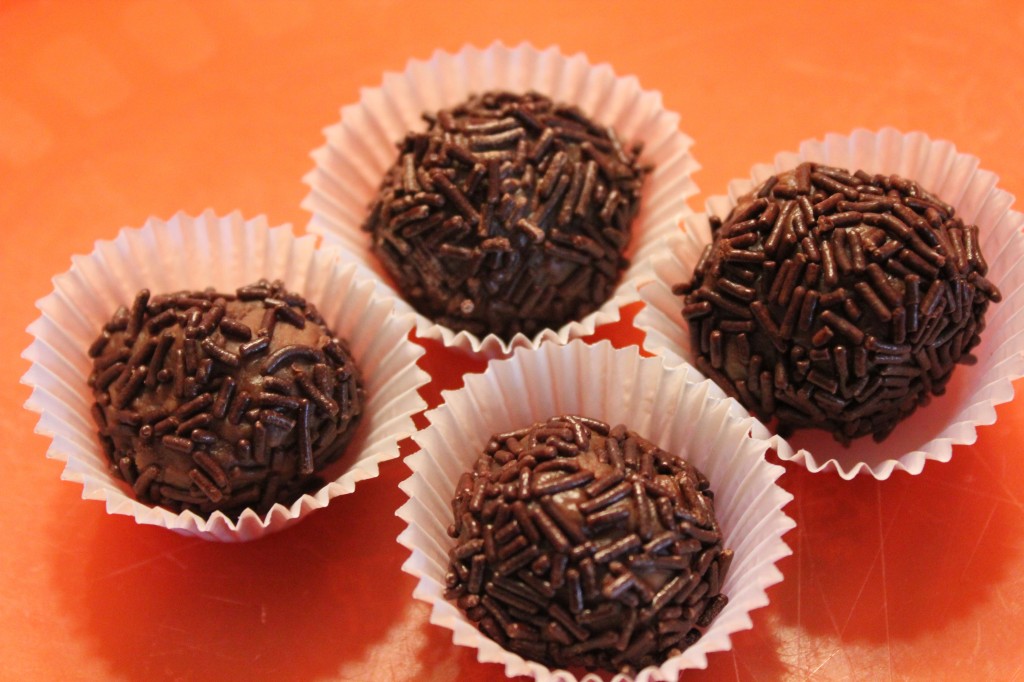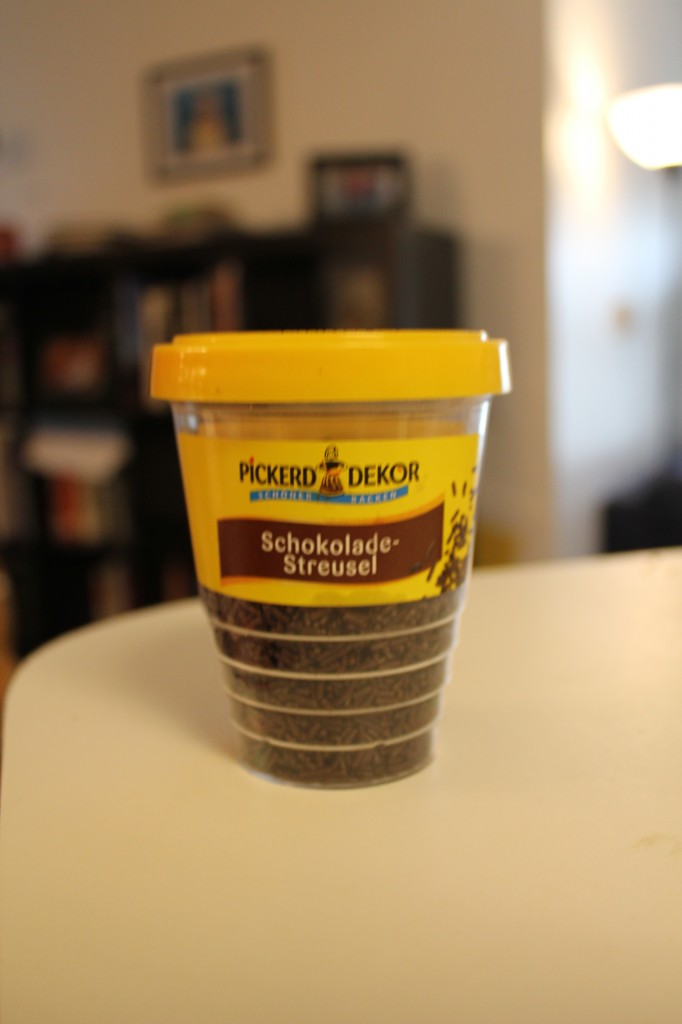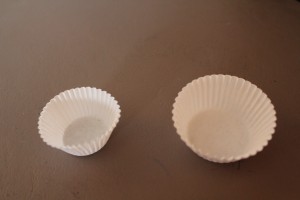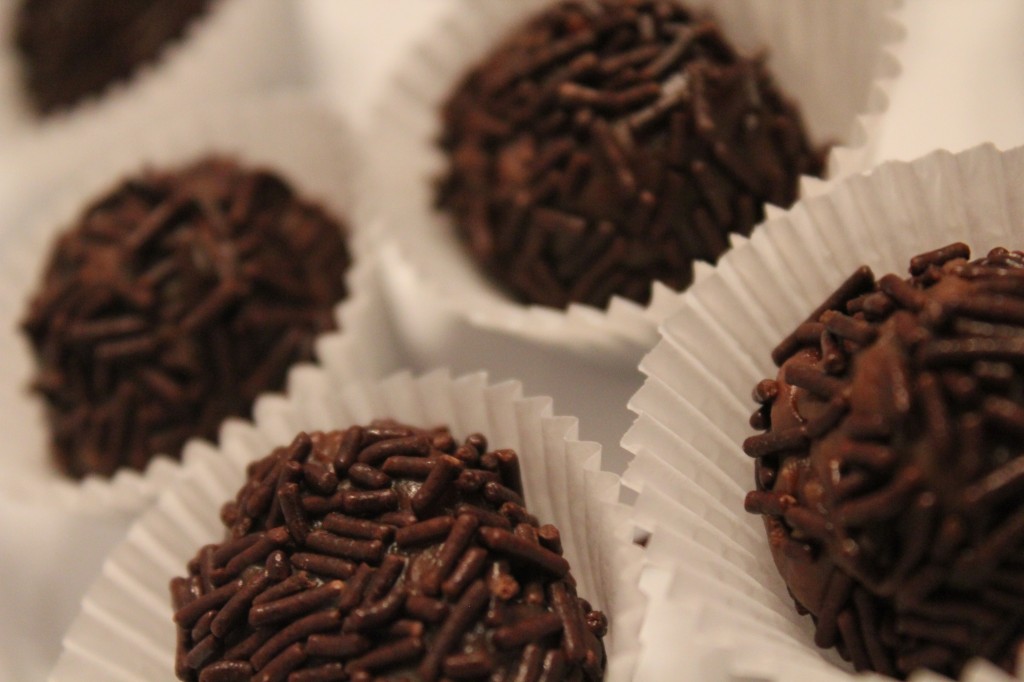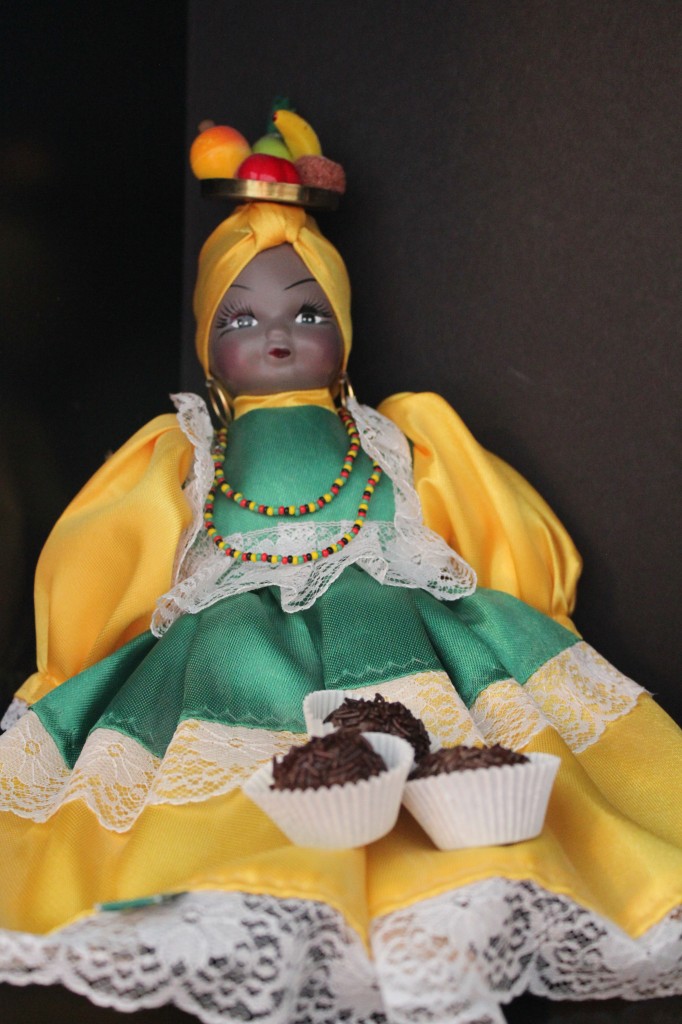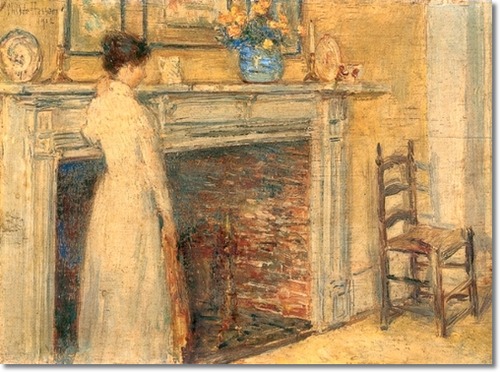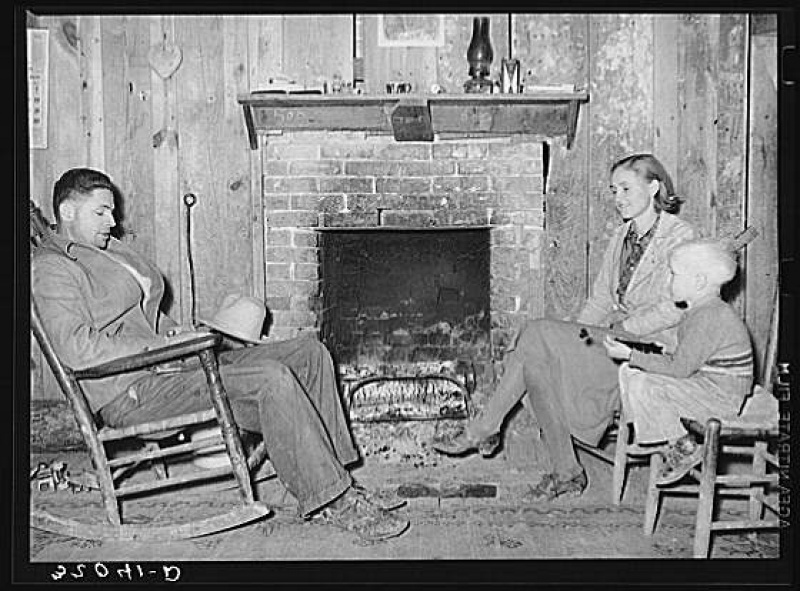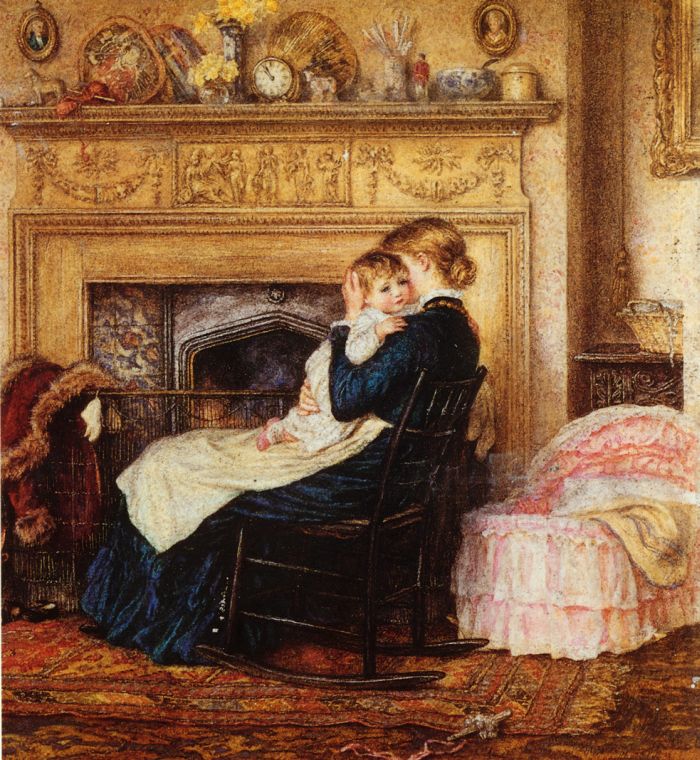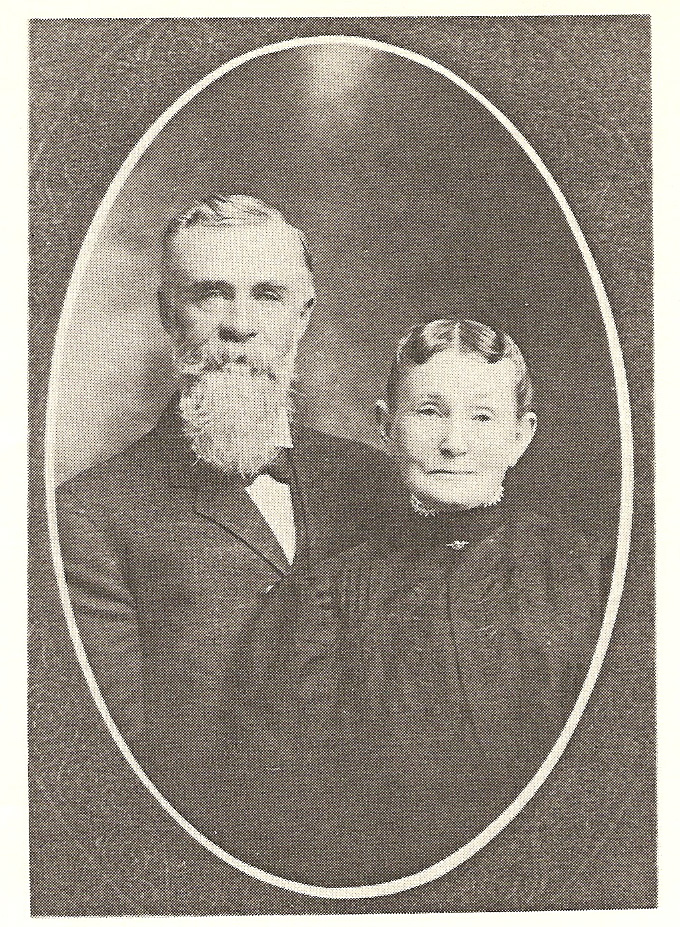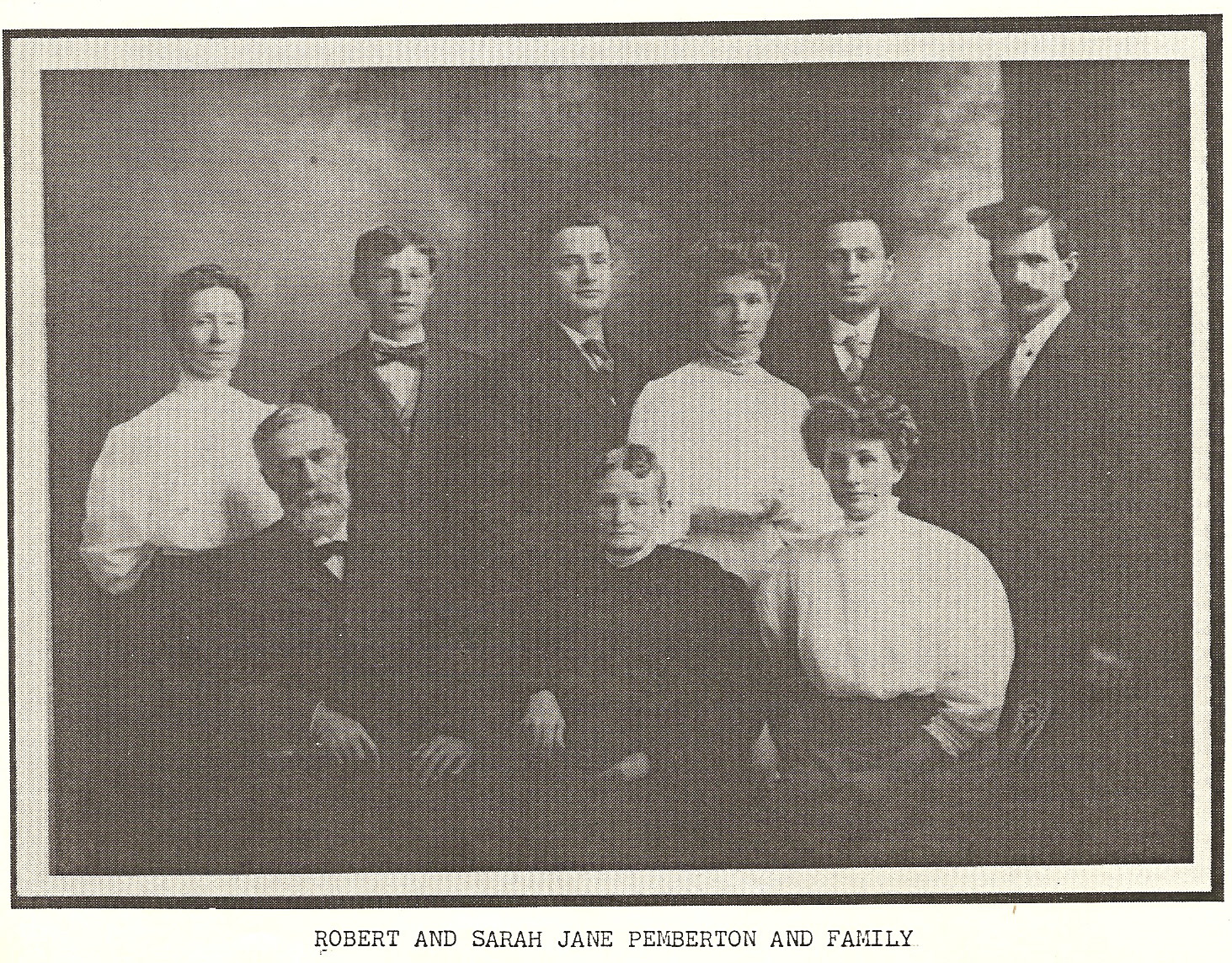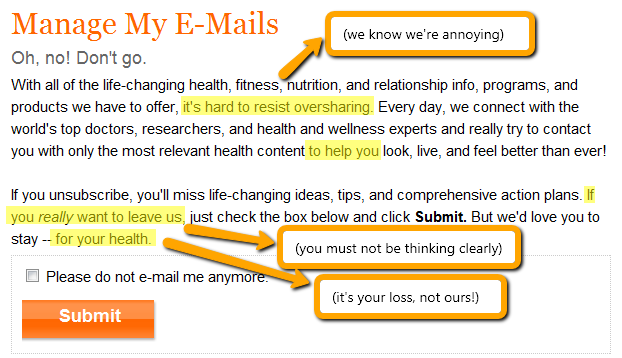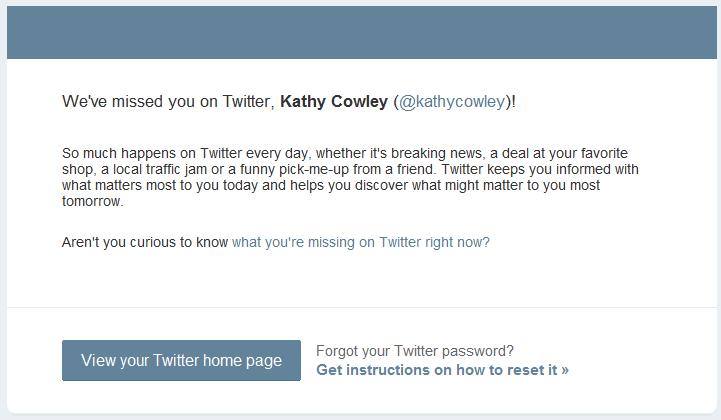Brigadeiros Recipe (A Brazilian Chocolate)
Last night I made brigadeiros, that yummy Brazilian chocolate that makes Brazil lovers drool. These were probably one of my top five favorite foods (yes, chocolate is a food) when I lived in Brazil. My picture seemed to garner a lot of love on Facebook, and a bit of lust, so I thought, if I can’t share the chocolates with my friends (I’m not sure how I feel about sharing chocolates) then I can at least share the recipe.
Here’s the recipe I used–I translated it from Portuguese about 7 years ago, and don’t remember where I got it from.
Brigadeiros (A Brazilian Chocolate)
1 can of sweetened condensed milk
3-4 tablespoons of cocoa
Several tablespoons butter
Chocolate sprinkles (use real milk chocolate sprinkles)
Melt the butter on the stove. Mix in the cocoa. Add the sweetened condensed milk. Stir, over heat, as you bring the mixture to a low boil. Keep stirring until the consistency changes and it becomes thick and sticky. Remove from heat. Let cool enough so you can touch it with your fingers, but no cooler. Put butter on your fingers, and quickly roll the mixture into balls (of about and inch to an inch and a half diameter). Roll the balls in chocolate sprinkles and place them in candy cups (like miniature muffin cups). Let cool before eating.
Makes about 30.
More tricks, techniques, and pictures:
Chocolate Sprinkles
The key to this recipe is to use real chocolate sprinkles. If you go to a normal grocery store in the US and look really carefully at the label, you’ll realize that what you’re buying is not chocolate, but chocolate flavored. Alright–okay for some things, but not ideal for brigadeiros.
My sister got me these real chocolate sprinkles from Germany–they’re 32%, which is way more than your Hershey’s bar will have.
You can also order them online, or get them at a specialty store: Pirate O’s in Draper, UT has them, as do other gourmet and foreign food stores.
Candy Cups
It’s also helpful to actually have candy cups. They’re a little smaller than mini muffin holders. See the comparison:
I bought these at a cake shop. You could use mini muffin paper cups and it’d be just fine, the risk is that you’ll make them too large, and you’ll be overwhelmed by chocolately goodness. (Okay, maybe that’s not a bad thing.)
More Pictures
Who can resist a brigadeiro close-up?
And my Brazilian doll, hoarding several brigadeiros, which are as large as her head:

